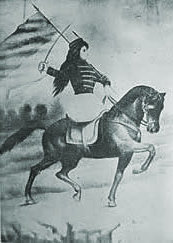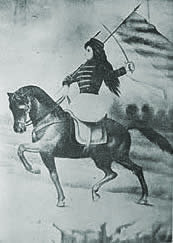
|
Women and Independence in Latin America An exploration of women's involvement in the Latin American Wars of Independence |

|

|
Women and Independence in Latin America An exploration of women's involvement in the Latin American Wars of Independence |

|
Click on the image below to see the full-size image
 Exile 1814 |
Gender:Female
Ethnic origen: White
Events:
| 1778 | - | Bogotá | - | Not applicable | - | She was baptised on 22 March 1778, in Bogotá. |
| 1810 | - | Bogotá | - | Patriot | - | She marched to the Viceroy's palace, Bogotá, on 20 July 1810. |
Connections:
Alvarez family (Bogotá)Biography:
She was baptised on 22 March 1778, Bogotá, a member of the González Manrique, Alvarez, Ricaurte, París, Pardo, Nariño clan. (Monsalve, 139)
An aristocratic woman who participated in the independence activities of 20 July 1810. (Knaster, 482.)
She was among a group of women who marched to the Viceroy's palace, Bogotá, on 20 July 1810. She was the daughter of Dr. Miguel Barriga and Agustina Brito. She was from one of the most notable and richest families in Bogotá, and was the second wife of Juan Esteban Ricaurte (after Villavicencio's death?). The Barriga Brito family was a strong social centre. Gabriela was tall, elegant, with black hair and brilliant eyes, she may have had smallpox scars. She hosted a banquet for the royal Comisario, Antonio Villavicencio (related?). (Monsalve, 84-86)
She was the daughter of Miguel Sánchez Barrida and Agustina Brito y Ricaurte. Her paternal grandparents were José Sánchez Barriga and Isabel de Osorio and her maternal grandparents were Pedro Brito and Gregoria Ricaurte. Her husband, Antonio Villavicencio, was executed by the royalists on 6 June 1816. She was forced to leave Bogotá in 1816, and made to walk to Anolaima where she was kept under the vigilance of the Alcade. (Monsalve, 136-137)
She was probably held in the Cárcel Chiquito before being exiled to Anolaima. (Monsalve, 159)
She was awarded an annual pension of 200 pesos by Bolívar after independence. (Monsalve, 264)
References:
Díaz y Díaz, Oswaldo (1962) Los Almeydas: Episodios de la resistencia patriota contra el ejército pacificador de tierra firme
Knaster, Meri (1977) Women in Spanish America: An Annotated Bibliography from Pre-Conquest to Contemporary Times
Monsalve, José D (1926) Mujeres de la independencia